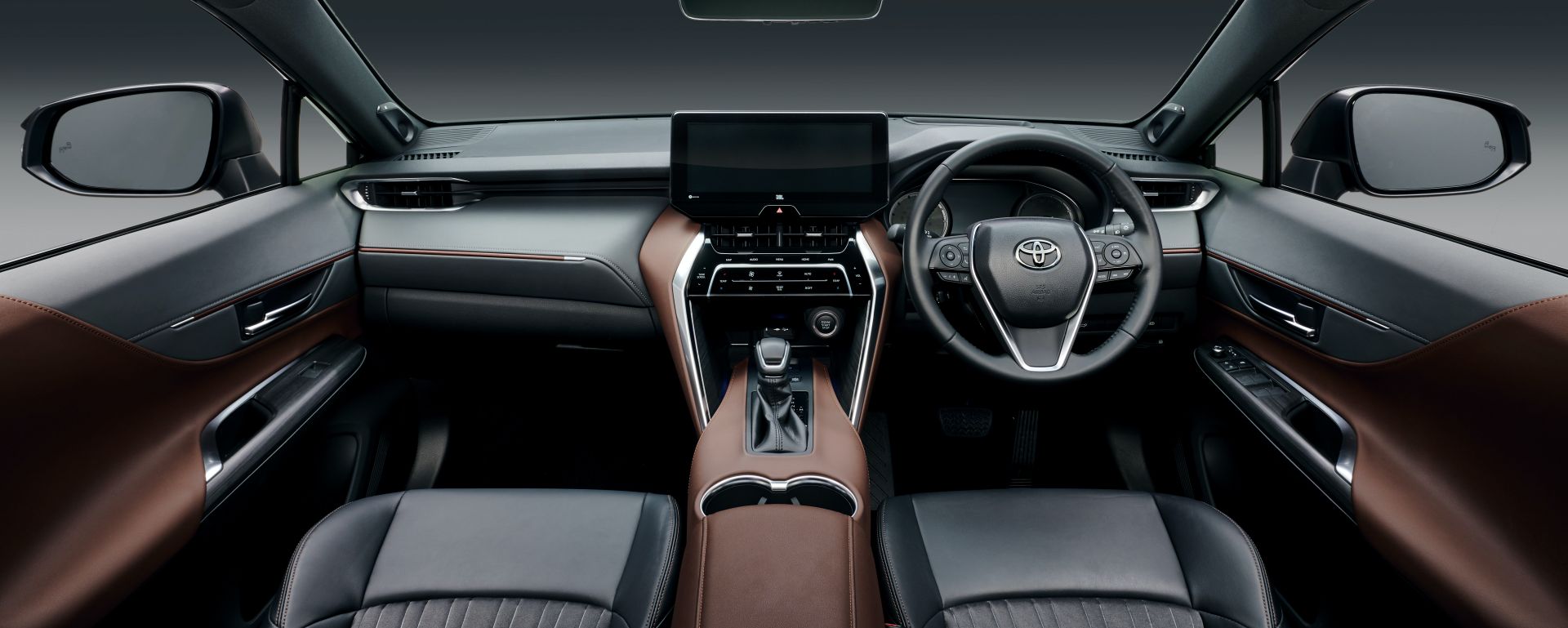Following last week’s leaked images, Toyota has released the first photos and details of the fourth-generation Harrier crossover for Japan.
Scheduled to arrive in local dealerships in June 2020, the all-new Toyota Harrier is based on the TNGA (GA-K) platform. This means it shares underpinnings with the latest Toyota RAV4 rather than the Lexus RX, as it used to be the case for the first two generations. The previous Harrier was related to the fourth-generation RAV4.
The new architecture enables a highly rigid body with a low center of gravity “in pursuit of both ride comfort and vehicle driving performance with a focus on driver sensitivity.” The suspension features MacPherson struts at the front and a double wishbone setup at the rear, with the result being a ride that is “both solid and graceful,” according to the automaker.
Read Also: Toyota Harrier Special Editions Get “Blueish” in Japan
The switch to the TNGA (GA-K) platform also allows the Harrier to use Toyota’s latest Dynamic Force Engine and Direct Shift-CVT, in addition to the Toyota Hybrid System (THS II). The 2.0-liter four-cylinder Dynamic Force gasoline engine delivers 171 PS (169 HP) and 207 Nm (153 lb-ft) of torque. The unit is mated to a standard Direct Shift-CVT and can be had with standard front-wheel drive or optional all-wheel drive.
The THS II hybrid is also available in FWD and AWD configurations. The former combines a 178 PS (176 HP) 2.5-liter four-cylinder gasoline engine with an 88 kW (120 PS / 118 HP) electric motor on the front axle for a system output of 218 PS (215 HP). The AWD model adds a rear-mounted 40 kW (54 PS /53 HP) motor, resulting in a total available output of 222 PS (219 HP).
Both hybrid variants feature an electric continuously variable transmission. No fuel economy figures are available for the moment but Toyota claims superior fuel performance for both Harrier powertrains.
In terms of size, the fourth-gen Harrier sees only minor increases, measuring 4,740 mm (186.6 in) in length (+20 mm), 1,855 mm (73 in) in width (+20 mm) and 2,690 mm (105.9 in) between the axles (+30 mm). The height, however, drops 30 mm to 1,660 mm (65.3 in) for a more dynamic appearance.
While we’re on this subject, the styling is clearly a continuation of the previous-generation Harrier but with a more athletic twist. Highlights include the sleek LED headlights underlined by a chrome element that also “supports” the grille, aggressive front bumper design, coupe-like roofline, and thin horizontal LED taillights spanning the entire width of the vehicle.
The interior design reminds of the new RAV4 but is far from identical. The center console does an impression of a horse’s saddle with a 12.3-inch touchscreen for the T-Connect SD navigation system on top, while the dash appears more luxurious and wraps around the passengers via the door panels featuring a similar look.
Toyota says the cabin employs tactile synthetic leather and bentwood-inspired wood tones and piping. Another highlight is the panorama roof accompanied by electric shades and electro-chromatic windows. The carmaker claims the new Harrier’s interior delivers greater comfort and quietness thanks to the use of sound-absorbing and vibration-controlling materials, as well as highly efficient sound-absorbing windows.
As expected, the Harrier comes with Toyota Safety Sense as standard, which includes a pre-collision system that detects pedestrians during the day and at night, as well as cyclists during the day.
There are other advanced safety features as well, such as Intelligent Clearance Sonar with Parking Support Brakes (Stationary Objects) that helps prevent collisions during low-speed driving in parking lots, or the Digital Inner Mirror which enables recording of images to the front and rear of the vehicle while driving. Finally, the Harrier gains Active Cornering Assist (ACA), a system that controls the brakes to prevent understeer in corners.
https://www.youtube.com/watch?v=_fmmK4GNAHY































